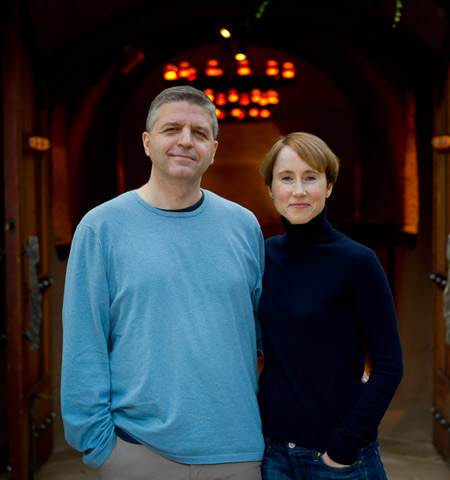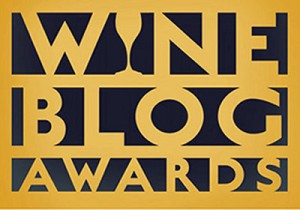Ask a wine lover or a serious wine collector what one of their biggest gripes is about the wine marketplace and the answer is often not being able to get their hands on that cult Cabernet from California rated 98+ points. Equally frustrating is having to wait to get on a winery’s mailing list to have a chance at getting an allocation of a highly rated, in demand bottle of wine.
What if you could get the wine you want before it hits the marketplace?
That’s what E-Cep founders Serge Marquie and Sally Wilkinson set out to discover. As both of them will tell you quite often, “we are not wine people we are finance people,” Serge says. “But we love wine.” Coming from London, the historical birthplace of the en primeur system, Serge and Sally were surprised that there was no formal wine futures market in this country.
Once a year in Bordeaux, France, a marketplace for selling wine futures takes place, called En Primeur. There is often much hype around this event, as this is the time when prices for the Bordeaux wines, harvested just six months earlier, are set, often at jaw dropping figures.
During en primeur the wine trade, journalists and critics are able to taste the newly made wines from barrel. Reviews of these tastings drive the market, as Robert Parker’s famous 100 point rating of the 1982 Bordeaux vintage did. Prices went through the roof, especially for the first growth wines of Latour, Lafite Rothschild, Margaux, Haut-Brion and Mouton-Rothschild.
Negociants buy the wines via a middleman called a courtier, who haggles the future price of the wine between the chateaux (the Bordeaux wineries) and the negociants. Once the wine future is sold, the chateaux age the wine and release it, on average, two years later. But the financial transaction takes place up front, meaning the negociants pay now for a wine that will be aged, bottled and released several years later.
It’s a way the negociants insure they get the allocations of the wines that their clients want, and hopefully at a set price below what the wine will sell for commercially upon release.
In 2012 Serge and Sally founded E-Cep, which they say “introduces wine futures to the American wine marketplace for the very first time.” But many wineries, especially in Livermore Valley in California, offer wine futures themselves. The difference between that and E-Cep is that E-Cep is the first formal, centralized marketplace for offering wine futures.
If you want to make sure you get a few bottles of Dana Estates, Scarecrow, or Ovid, E-Cep is for you. Serge and Sally specifically focus on the boutique wines of Napa Valley. They’ve developed relationships with wineries whose wines are either never sold retail or extremely hard to find. Most make less than 5,000 cases; some make 1,000 cases or less. E-Cep negotiates with wineries to pre-sell as little as one percent up to 10 percent of their production.
E-Cep charges a percentage commission on each completed sale; the rate is the same for all winery partners.
“It is the opposite of what French en primeur is,” says Serge. “In French en primeur 80% of the proceeds goes to a black hole which are the negociants. E-Cep is completely transparent. It is the winery’s platform. They see who buys, and it is a nice compliment to the direct to consumer system.”
The advantages E-Cep offers, says Serge, is that the wine bonds “provide price, provenance and quantity certainty,” without your having to purchase your mailing list allocation every year. If you don’t buy a bond, you are still able to buy a bond in the future. You are not kicked off the mailing list or denied an allocation.
Currently E-Cep has 18 partner wineries; the goal is to represent up to 30 wineries, but no more than that. Corra, a wine made by Celia Welch, was the first to sign up. Kata, a Cabernet Sauvignon and Petite Sirah blend made by David Beckstoffer (the first he’s ever made) is the most recent winery to join E-Cep.
“The model couldn’t be simpler,” Sally says. The way it works: you register for free on the E-Cep website. Once every other month, on the second Thursday of the month, bonds from four to five wineries are offered. Each offering has a theme. For example, the current bond offering, “the old and the new Napa,” includes three bottles of Brand Napa Valley for $675 and three bottles of Kapcsandy Roberta’s Reserve for $1,350. You add it to your cart. When you check out you are basically entering into a contract with the winery. Your request to buy the bond must first be approved by the winery. Once approved, payments go directly to the winery. When it comes time to ship the wine to you, it comes directly from the winery, ensuing the provenance of the wine.
On June 19th the next bond offering goes live. The theme is “Innovations in Winemaking” and will feature wines from Dana Estates, Blankiet Estate, Ovid and Vine Hill Ranch. If you are thinking June 19 is not the second Thursday of the month, as mentioned earlier as the day of bond releases, you are right. The June offering has been delayed due to Auction Napa Valley. In August the offering schedule will be back on track.
The bond guarantees the purchase price will not change, even if the retail price upon release is higher. Upon shipping the buyer pays taxes and shipping fees.
The bonds are not transferrable; the person who bought the bond is the person that must receive the wine shipment. As is the case for any winery in the United States, wineries selling bonds on E-Cep can ship wine only to states that allow it.
The question of risk certainly comes up, as in what if something happens to the wine before it is bottled? Serge says the main risk for the bond buyer is the liquidation or bankruptcy of the winery, which he says is a “default risk.” Should the wine become unavailable due to theft or fire or other catastrophe, the bond buyer would have recourse and Serge says they would expect the bond buyer and the winery to reach an agreement to replace the wine with another vintage.
“We have been extremely selective in the wineries we partner with in order to minimize both of these risks,” he says. All of our winery partners have exceptional reputations for creating world class wines, supported by masterful teams and professional operations.”
Serge and Sally see E-Cep as a platform to introduce and educate wine consumers about the smaller wineries they may not have ever heard of. Each wine offering includes a story about the winery and the wine itself. Serge and Sally write “investment research” papers for the site, with topics ranging from an explanation of en primeur to a short history of Napa Valley.
For now, E-Cep will continue to offer rare, boutique Napa Valley wines, but Serge and Sally are looking into offering wines from other regions. They are growing the business slowly and cautiously. “For people who love wine,” Serge says, “we want to offer wines we think are interesting and access to them.”



